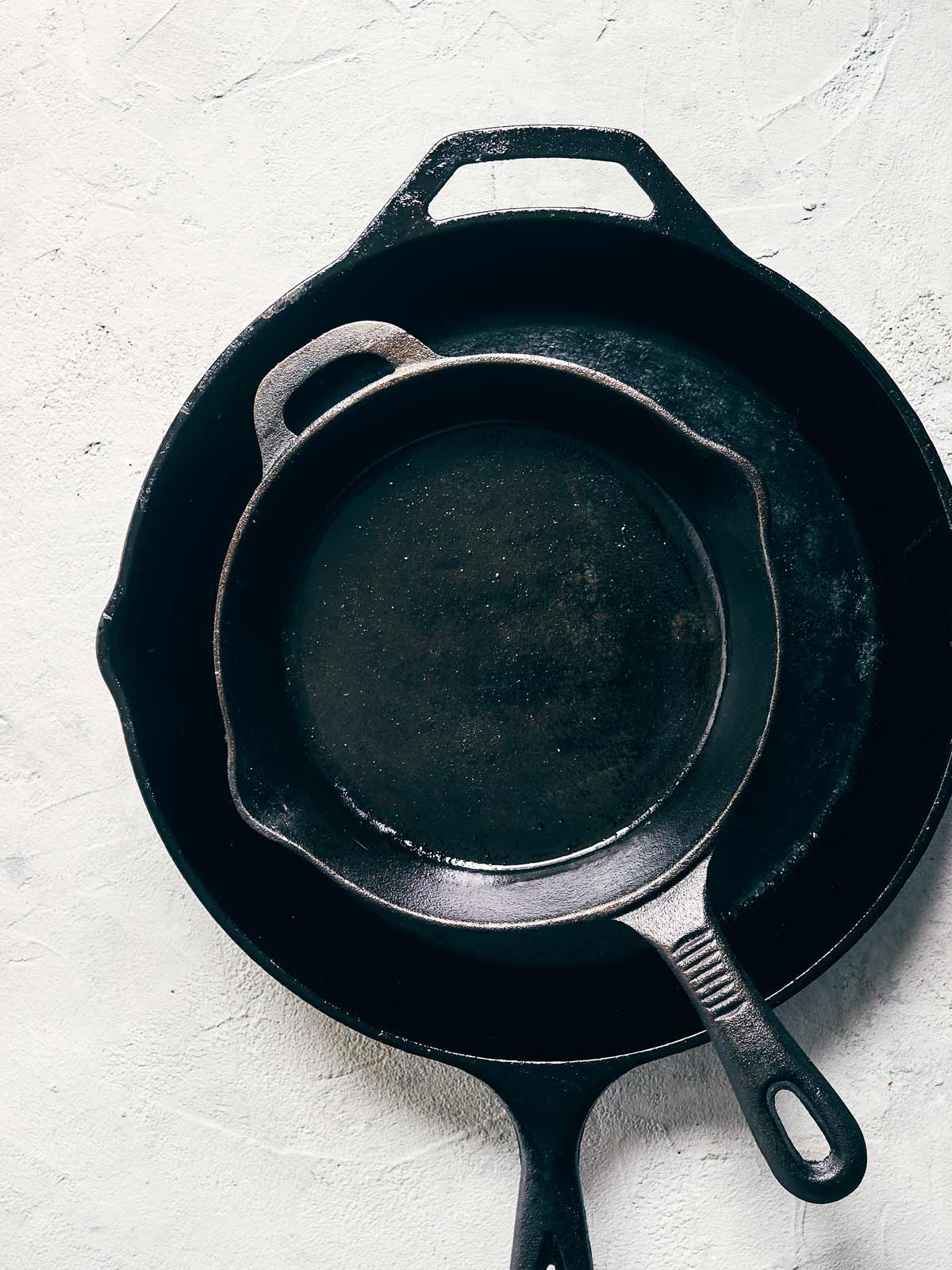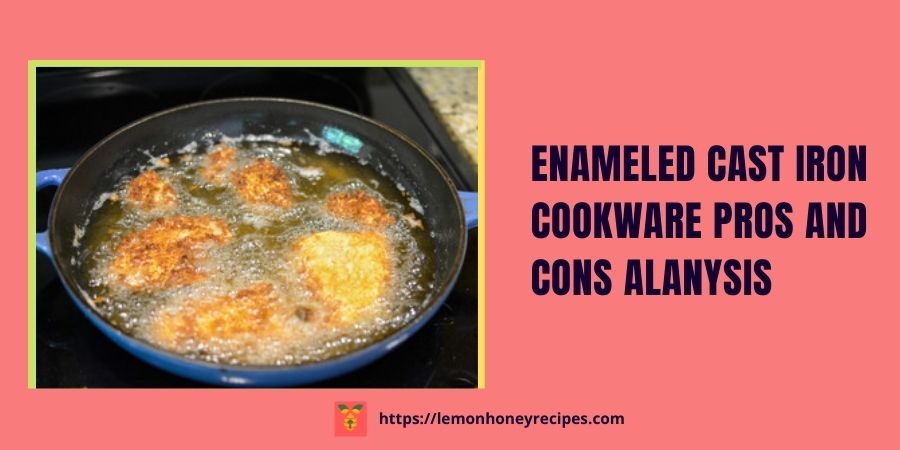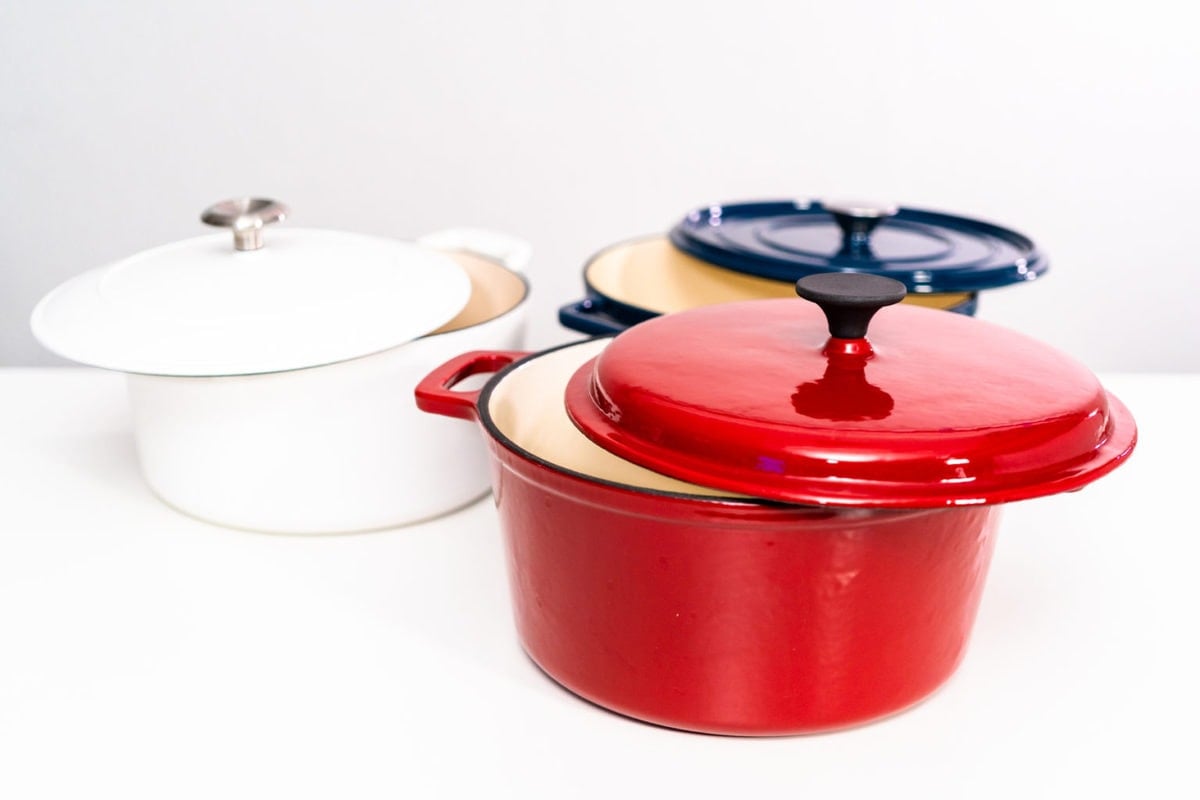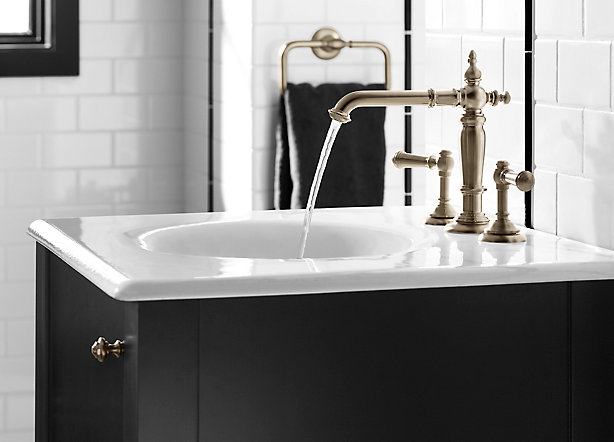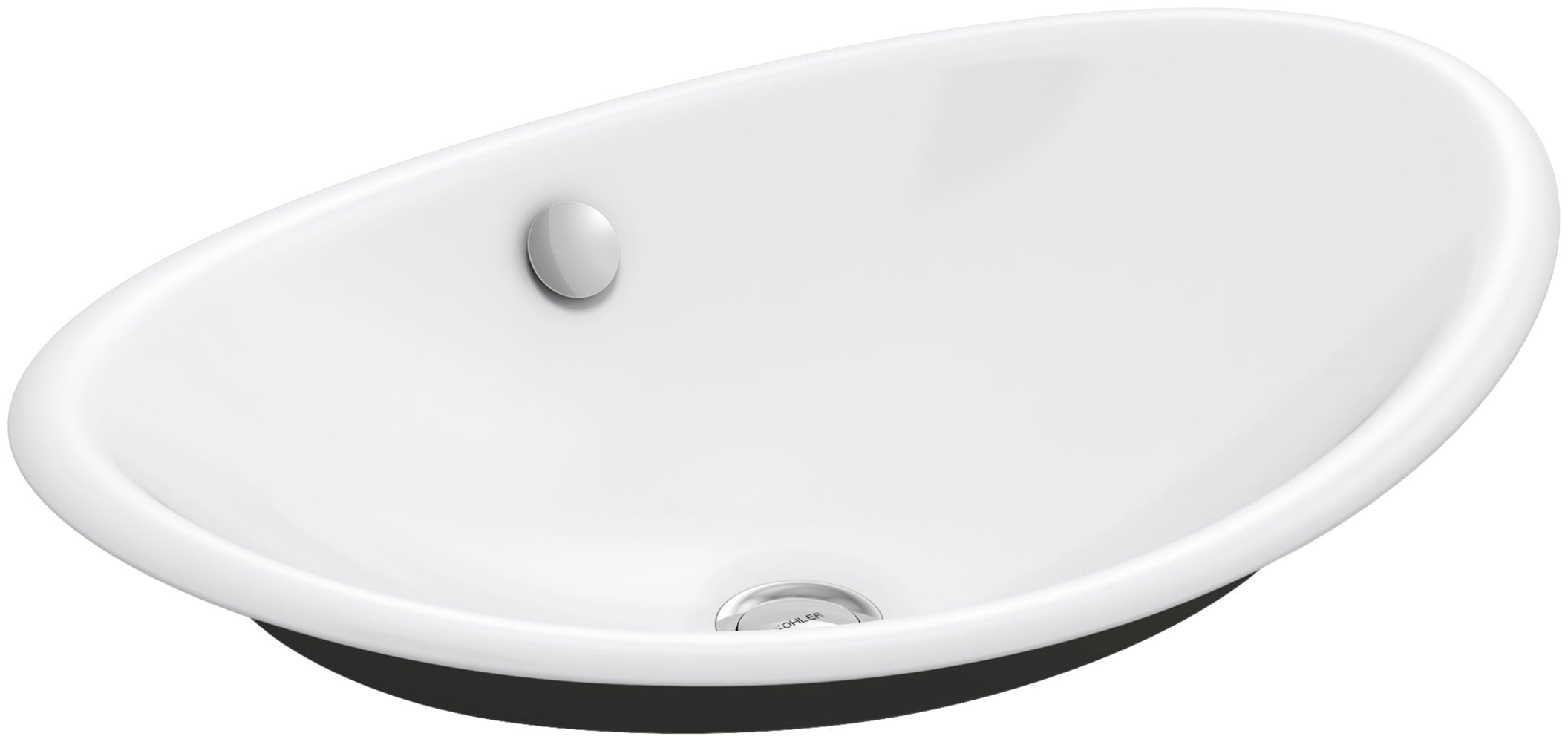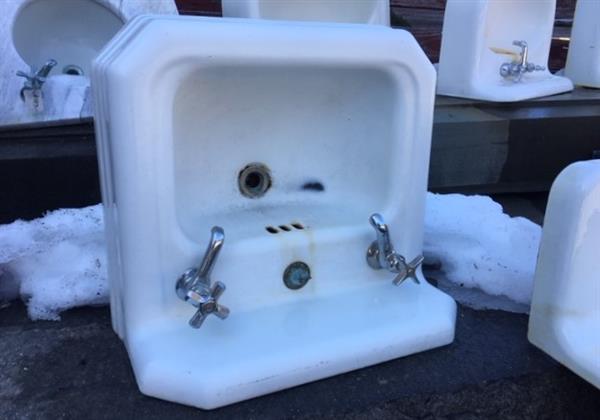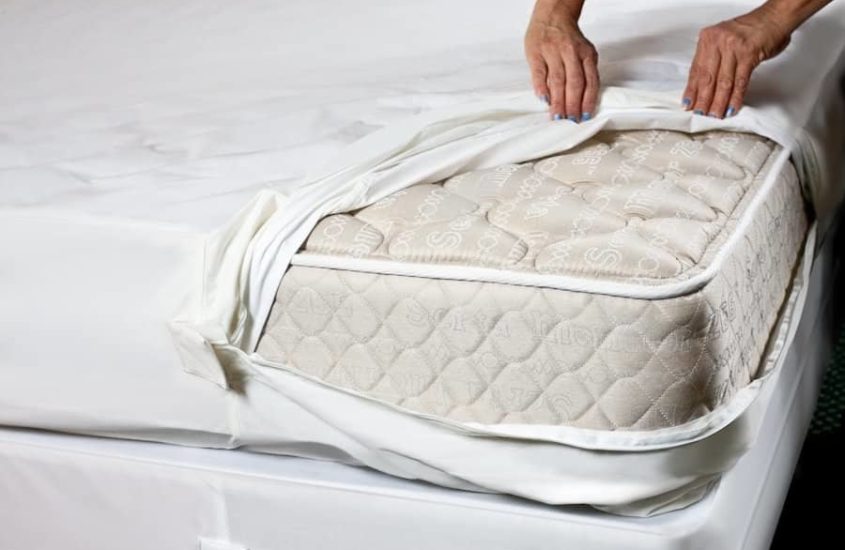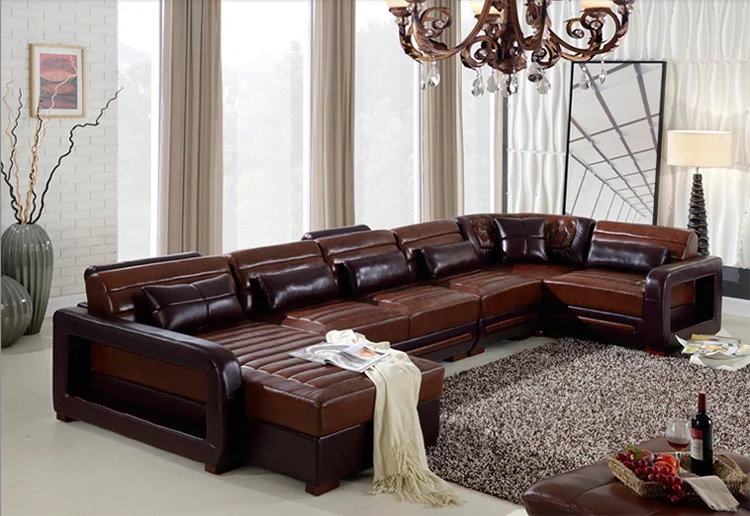Choosing the right bathroom sink material is an important decision when renovating or building a new bathroom. Two popular options that often come up in this decision are vitreous china and cast iron. Both materials have their own unique characteristics and benefits, making it difficult to determine which one is the better choice. In this article, we will compare and contrast vitreous china and cast iron bathroom sinks to help you make an informed decision. Bathroom Sink Materials: Vitreous China vs. Cast Iron
Vitreous china is a type of ceramic material that is commonly used for bathroom fixtures such as sinks and toilets. It is made by mixing clay, feldspar, quartz, and other materials, and then firing it at high temperatures. On the other hand, cast iron is a strong and durable material made by melting iron and pouring it into a mold. Both materials have their own strengths and weaknesses, so let's take a closer look at them. Vitreous China vs. Cast Iron: Which is the Better Material for Your Bathroom Sink?
One of the main differences between vitreous china and cast iron bathroom sinks is their weight. Cast iron sinks are much heavier than vitreous china sinks, making them more difficult to install. However, this weight also makes them more durable and less likely to chip or crack. Vitreous china sinks, on the other hand, are lightweight and easier to install, but they are more prone to chips and scratches. Another factor to consider is the appearance of the sink. Vitreous china sinks have a smooth and glossy finish, giving them a more modern and sleek look. They are also available in a wide range of colors and styles, making it easier to match them with your bathroom decor. Cast iron sinks have a more traditional and classic look with a porcelain enamel finish. They are usually only available in white, but this can add a timeless and elegant touch to your bathroom. Comparing Vitreous China and Cast Iron Bathroom Sinks
As with any material, there are pros and cons to both vitreous china and cast iron bathroom sinks. Vitreous china is relatively inexpensive, making it a budget-friendly option for those who want a stylish and durable sink. It is also resistant to stains and scratches, making it easy to clean and maintain. However, it is not as durable as cast iron and is more prone to chipping and cracking. Cast iron sinks, on the other hand, are extremely durable and can last for decades with proper care. They are also heat-resistant and can withstand high temperatures without damage. However, they are more expensive than vitreous china and require professional installation due to their weight. They are also prone to staining and can be difficult to clean. The Pros and Cons of Vitreous China and Cast Iron Bathroom Sinks
When it comes to choosing between vitreous china and cast iron for your bathroom sink, it ultimately depends on your personal preferences and needs. If you want a budget-friendly and modern sink, vitreous china may be the better option for you. If you are looking for a durable and classic sink that will last for years, cast iron may be the way to go. It's important to weigh the pros and cons and consider your budget and style when making this decision. Choosing the Right Material for Your Bathroom Sink: Vitreous China vs. Cast Iron
Still not sure which material is the best choice for your bathroom sink? Here's a quick summary of the key points to help you make your decision: Vitreous China Bathroom Sink: A Comprehensive Guide to Vitreous China and Cast Iron Bathroom Sinks
Aside from the obvious differences in material and appearance, there are a few other factors to consider when comparing vitreous china and cast iron bathroom sinks. One important factor is the installation process. As mentioned before, cast iron sinks are much heavier and require professional installation, while vitreous china sinks can be installed by homeowners. Another factor to consider is the cost. While vitreous china sinks are more affordable upfront, they may need to be replaced more often due to their susceptibility to chips and scratches. Cast iron sinks, on the other hand, may have a higher initial cost but can last for decades with proper care. The Differences Between Vitreous China and Cast Iron Bathroom Sinks
One of the most important factors to consider when choosing a bathroom sink material is durability. Both vitreous china and cast iron have their own strengths in this area. Vitreous china is resistant to stains and scratches, but it is not as durable as cast iron and can be prone to chipping and cracking. Cast iron is extremely durable and can withstand high temperatures, but it is more prone to staining and can be difficult to clean. Vitreous China vs. Cast Iron: Which Material is More Durable for Bathroom Sinks?
Ultimately, the decision between vitreous china and cast iron for your bathroom sink boils down to personal preference. Vitreous china is a popular choice for its affordability and modern look, while cast iron is a classic and durable option. Whichever material you choose, make sure to properly maintain and care for your sink to ensure its longevity. Understanding the Benefits of Vitreous China and Cast Iron Bathroom Sinks
Now that you have a better understanding of the differences between vitreous china and cast iron bathroom sinks, you can make an informed decision on which material is best for your needs. Consider your budget, style preferences, and the level of durability you require in a sink. With the right choice, you can have a beautiful and functional bathroom sink that will last for years to come. How to Choose the Perfect Bathroom Sink Material: Vitreous China vs. Cast Iron
The Pros and Cons of Choosing Between Bathroom Sink Vitreous China and Cast Iron
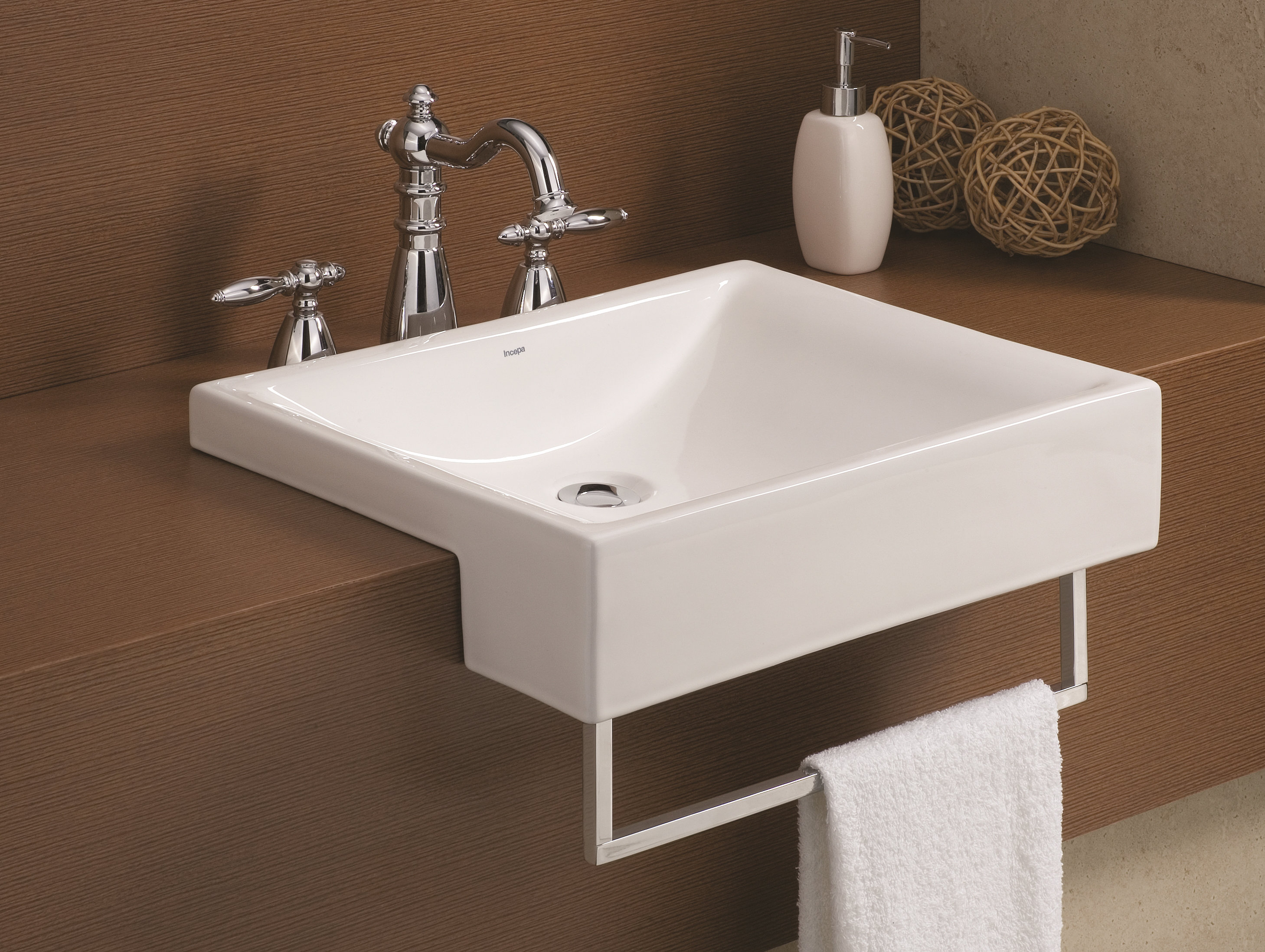
Introduction
 When it comes to designing our homes, we often pay close attention to every detail, including the type of materials used for our bathroom sinks. Two popular options for bathroom sinks are vitreous china and cast iron. Both materials have their own unique qualities and features, and it can be a tough decision to choose between the two. In this article, we will discuss the pros and cons of each material to help you make an informed decision for your bathroom sink.
When it comes to designing our homes, we often pay close attention to every detail, including the type of materials used for our bathroom sinks. Two popular options for bathroom sinks are vitreous china and cast iron. Both materials have their own unique qualities and features, and it can be a tough decision to choose between the two. In this article, we will discuss the pros and cons of each material to help you make an informed decision for your bathroom sink.
Vitreous China
 Vitreous china is a type of ceramic material that is commonly used for bathroom sinks. It is made by applying a glaze to ceramic clay and then firing it at a high temperature, resulting in a non-porous, glossy surface. This material is known for its sleek and modern look, making it a popular choice for contemporary bathroom designs.
The main advantage of vitreous china sinks is their durability and resistance to stains, scratches, and chips.
They are also very easy to clean and maintain, making them a practical choice for busy households. Additionally, vitreous china sinks come in a variety of shapes, sizes, and colors, giving you the flexibility to choose one that fits your design aesthetic.
However, one of the downsides of vitreous china is that it can be quite expensive compared to other sink materials. It is also prone to cracking if heavy objects are dropped on it.
Another important factor to consider is that vitreous china sinks may not be suitable for high-traffic bathrooms as they can be more prone to staining and discoloration over time.
Vitreous china is a type of ceramic material that is commonly used for bathroom sinks. It is made by applying a glaze to ceramic clay and then firing it at a high temperature, resulting in a non-porous, glossy surface. This material is known for its sleek and modern look, making it a popular choice for contemporary bathroom designs.
The main advantage of vitreous china sinks is their durability and resistance to stains, scratches, and chips.
They are also very easy to clean and maintain, making them a practical choice for busy households. Additionally, vitreous china sinks come in a variety of shapes, sizes, and colors, giving you the flexibility to choose one that fits your design aesthetic.
However, one of the downsides of vitreous china is that it can be quite expensive compared to other sink materials. It is also prone to cracking if heavy objects are dropped on it.
Another important factor to consider is that vitreous china sinks may not be suitable for high-traffic bathrooms as they can be more prone to staining and discoloration over time.
Cast Iron
 Cast iron sinks have been a classic choice for bathrooms for many years. They are made by pouring molten iron into a mold and then coating it with a layer of enamel. The result is a heavy and durable sink with a smooth, glossy finish.
The main advantage of cast iron sinks is their strength and resilience.
They are able to withstand heavy use and are less likely to chip or crack compared to other materials. They also have a timeless and elegant look that can add a touch of sophistication to any bathroom design.
However, cast iron sinks are quite heavy and may require additional support during installation. They are also prone to rust if the enamel coating is chipped or damaged.
Another factor to consider is that cast iron sinks can be more difficult to clean and maintain compared to vitreous china, as they are more susceptible to stains and scratches.
Cast iron sinks have been a classic choice for bathrooms for many years. They are made by pouring molten iron into a mold and then coating it with a layer of enamel. The result is a heavy and durable sink with a smooth, glossy finish.
The main advantage of cast iron sinks is their strength and resilience.
They are able to withstand heavy use and are less likely to chip or crack compared to other materials. They also have a timeless and elegant look that can add a touch of sophistication to any bathroom design.
However, cast iron sinks are quite heavy and may require additional support during installation. They are also prone to rust if the enamel coating is chipped or damaged.
Another factor to consider is that cast iron sinks can be more difficult to clean and maintain compared to vitreous china, as they are more susceptible to stains and scratches.
In Conclusion
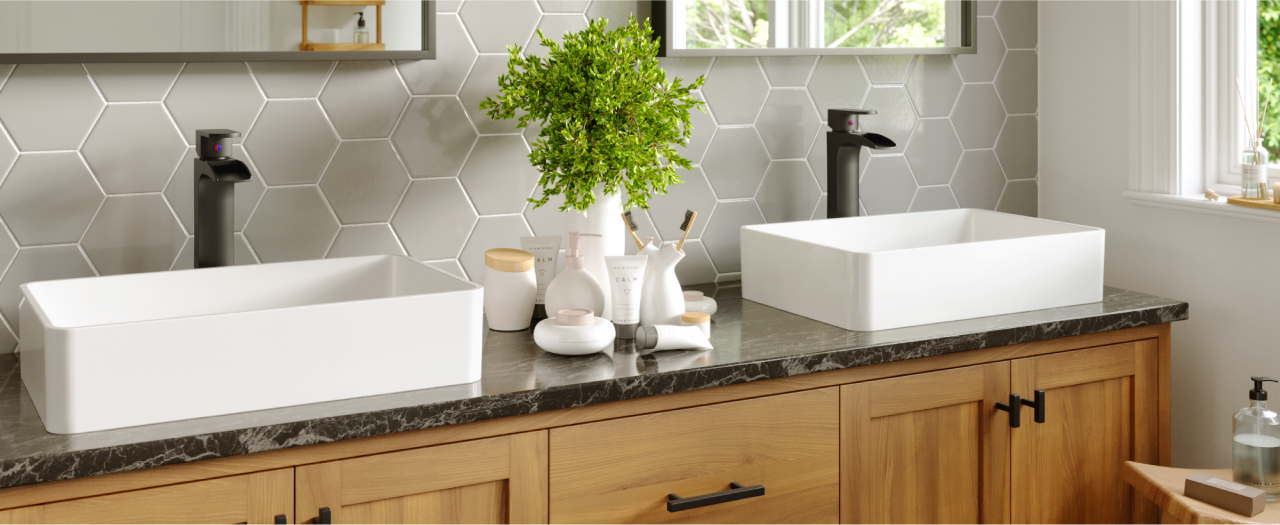 Ultimately, the decision between vitreous china and cast iron for your bathroom sink will depend on your personal preferences and the specific needs of your household. If you prioritize durability and a modern look, then vitreous china may be the better choice for you. However, if you value strength and a classic design, then cast iron may be the way to go. Whichever material you choose, be sure to do your research and consider all factors before making your decision.
Ultimately, the decision between vitreous china and cast iron for your bathroom sink will depend on your personal preferences and the specific needs of your household. If you prioritize durability and a modern look, then vitreous china may be the better choice for you. However, if you value strength and a classic design, then cast iron may be the way to go. Whichever material you choose, be sure to do your research and consider all factors before making your decision.



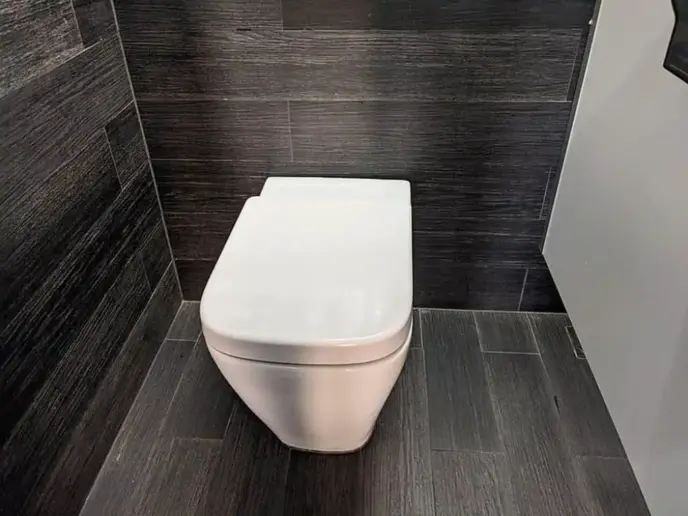




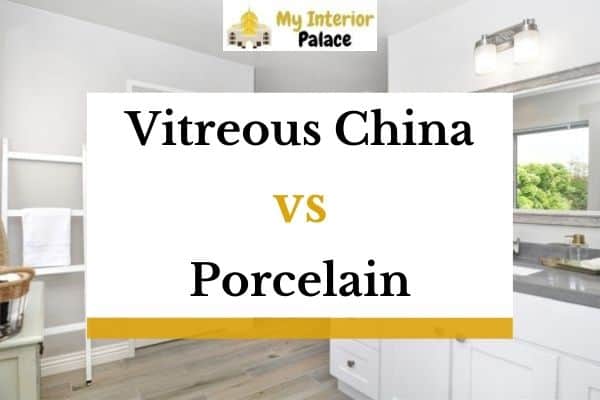
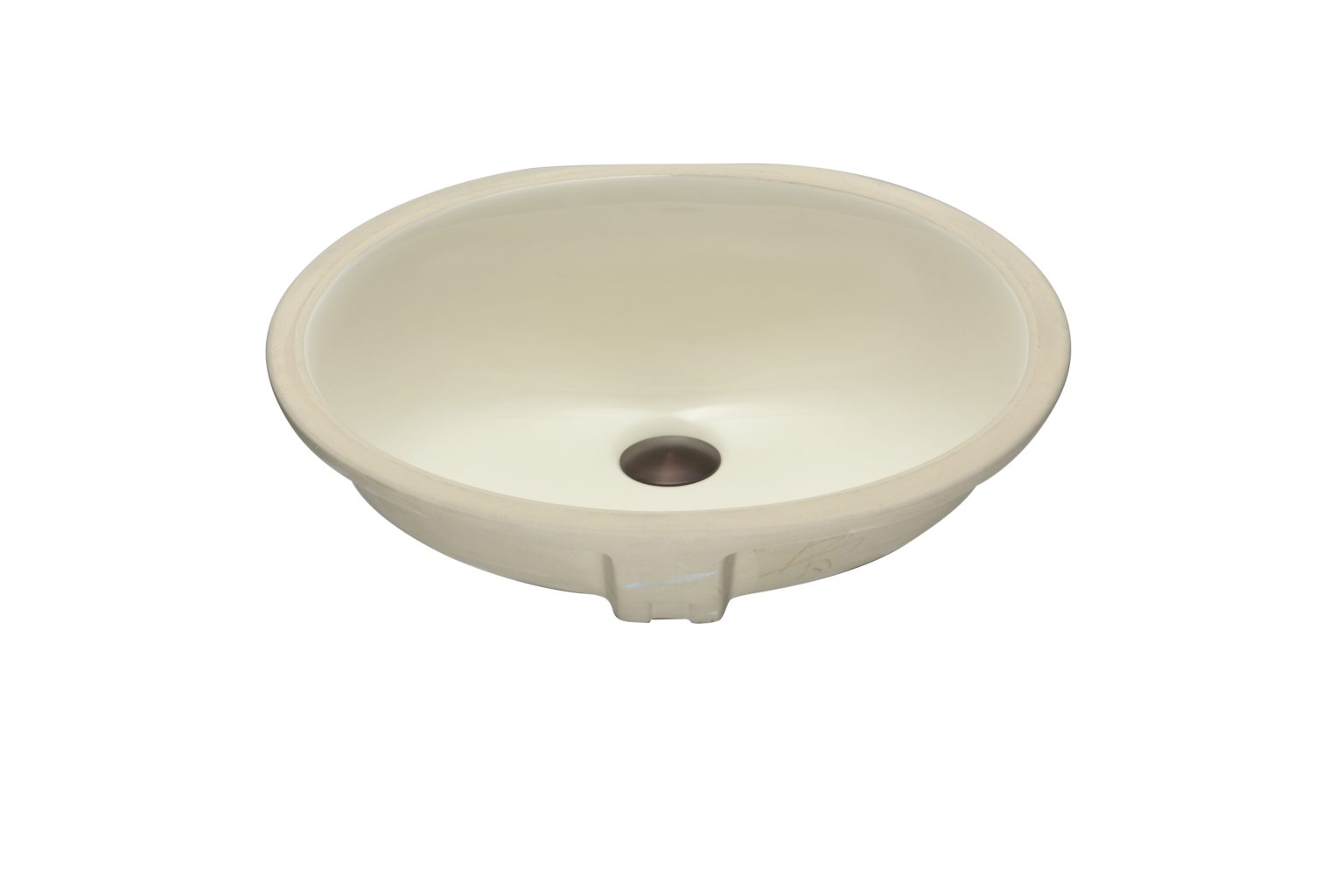




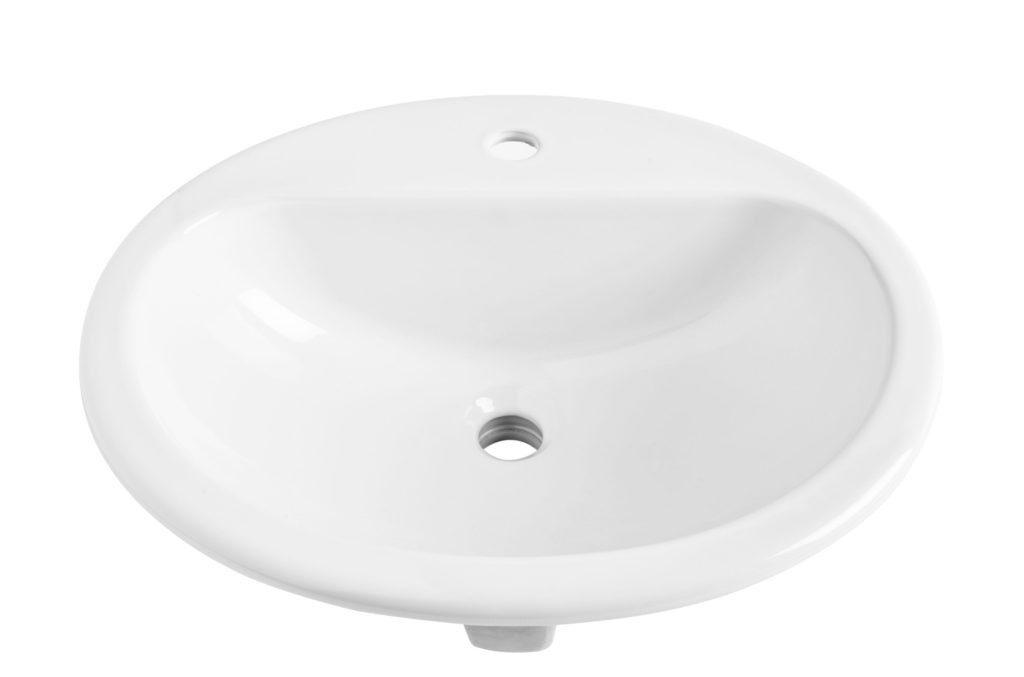
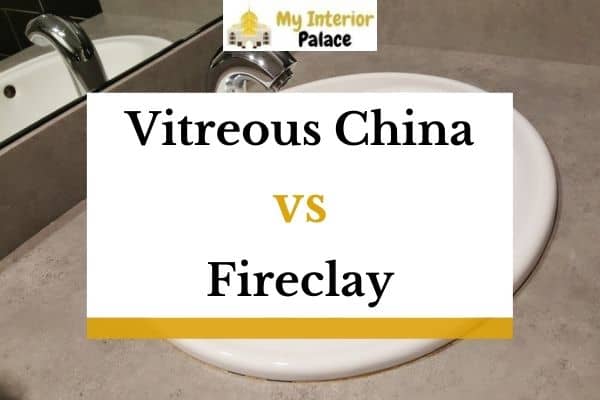






?wid=1200&hei=630)


